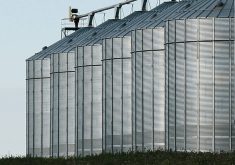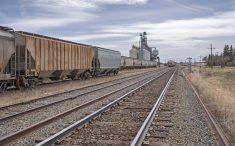Winnipeg | Reuters — Canada’s G3 Global Holdings will build a grain terminal at Port Metro Vancouver by 2020, increasing the flow of wheat and canola to Asia and Latin America, the company said on Wednesday.
The Winnipeg-based partnership of Saudi Arabian agriculture company SALIC and U.S. grain handler Bunge Ltd/ had been considering the project, which will cost more than $500 million, since last year.
Some in the industry worry the new terminal may worsen congestion at the port.
Read Also

Huge crops in South America says analyst
Although there’s a debate over the size of the South American soybean crop, there’s little doubt that it will be an enormous one, said consultant Michael Cordonnier of Soybean and Corn Advisor in Hinsdale, Ill.
G3 Global, which acquired the Canadian Wheat Board and Bunge’s Canadian grain operations in 2015, is a small player in a Canadian industry dominated by Richardson International and Glencore’s grain unit Viterra.
The terminal, capable of handling eight million tonnes of crops annually on the north shore of Burrard Inlet, would be the first new grain facility in nearly 50 years at the port, Canada’s busiest. Canada, a major canola and wheat shipper, has recently produced some of its largest harvests ever.
The north shore is home to grain terminals owned by Richardson and Cargill as well as Neptune Terminals, which handles potash and coal. It is served only by Canadian National Railway (CN) track.
Adding G3’s terminal, which will store up to 180,000 tonnes of crops, and Kinder Morgan’s planned oil pipeline expansion, may “significantly exacerbate” congestion, said Wade Sobkowich, executive director of the Western Grain Elevator Association, whose members include Richardson and Viterra.
Without major government spending to ease bottlenecks and improvements through federal railway legislation, terminal investments may not produce net gains for the industry, he said.
G3’s terminal will include a unique loop track, allowing three 134-car trains to unload without stopping, however.
“We think we are the solution, not the problem,” G3 CEO Karl Gerrand said in an interview, adding that he expects “very competitive” jostling among shippers for rail cars.
CN spokesman Jim Feeny said the railroad, port and shippers were working with Ottawa on long-term solutions to the north shore’s congestion.
To feed the terminal, G3 plans to build eight to 10 more country elevators in Alberta and Saskatchewan to collect grain from farmers, Gerrand said.
Elevators cost up to $45 million each to build, but G3 has no plans to go public to raise funds, he said.
The company has seven elevators across Saskatchewan and Manitoba, along with port terminals in Ontario and Quebec.
Peter Kiewit Infrastructure Co. is the design-build contractor, with construction starting in March.
— Rod Nickel is a Reuters correspondent covering the agriculture and mining sectors from Winnipeg.















